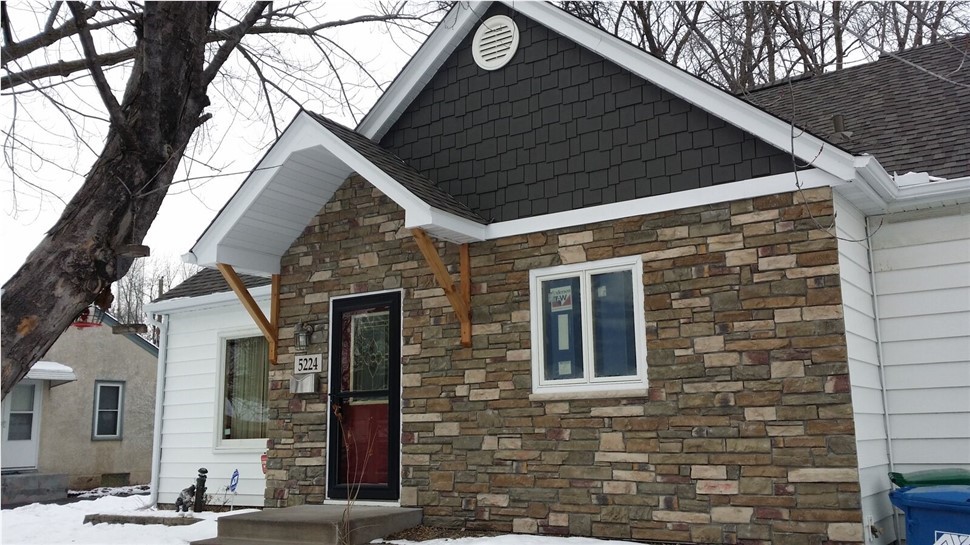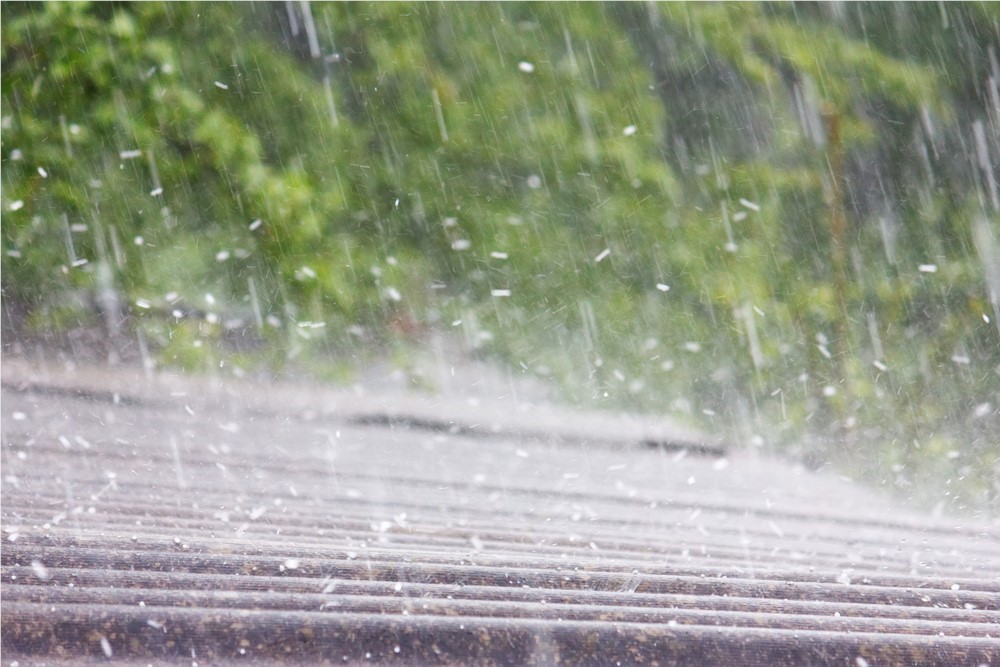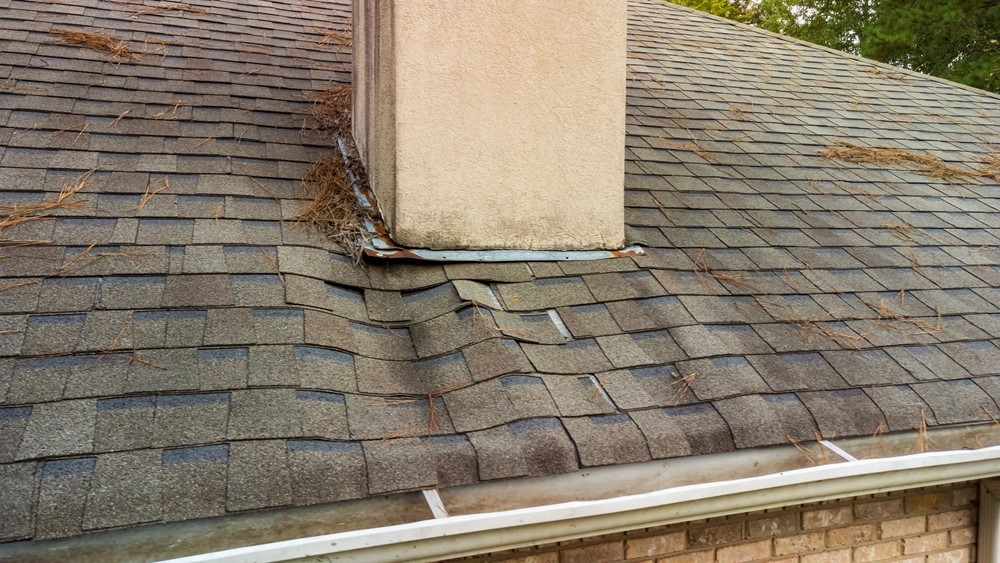Installing metal roofing on homes in the Minneapolis and St. Paul area is our specialty. Metal roofs are becoming very popular, both in Minnesota and throughout the country. But for many people it's a new technology they're not very familiar with.
That's understandable, and we know you might have some questions about metal roofing in general, and in particular the type of metal roofing we install. There are many different kinds of metal roofing, both in style and in material. Here at Quarve we specialize in steel, but there are other options available.We recently talked with owner and CEO Pat Quarve and asked him to share about our company's metal roofing and the types of products we install, as well as metal roofing in general. What follows is a segment of that interview.
 Interviewer: Quarve offers many options in metal roofing from three different manufacturers, is that right? Perhaps you could share some of the basics of metal roofing from Quarve that homeowners should know. Pat: Sure. We install metal roofing from Kassel & Irons and Arrowhead/Edco. Of course, there are other companies that manufacture metal roofing, but these are the ones we work with. One of the reasons we offer metal roofing from two different companies is to give our customers options. There are a lot of styles in metal roofing and different thicknesses available from these companies. Metal roofs come in a lot of different styles. Many people are familiar with the vertical ridged roofing style popular on barns and pole buildings, called standing seam. This is the style roof where there is a flat panel, then a raised rib, followed by another panel and then a rib and so on. We don't recommend this type of metal roof for reasons I'll cover as we talk. But occasionally we will install it as an accent, like over an entryway or an unheated porch. And at times we've installed it as vertical siding. Some homeowners really like this look, so we will do it on an entire roof, but it's not our first recommendation. The thing to keep in mind when you have a roof installed that's going to last for decades is that the next owner of your home may not care for that look, so you might want to consider metal roofing that resembles a traditional home roof, like an asphalt shingle or a wood shake. Besides style, there are a variety of finishes to consider. When residential metal roofing was first introduced, it came with a rock coating. And many metal roofing products still have this type of finish. For a number of reasons, this isn't a coating we prefer. Interviewer: And what would those reasons be? Pat: We’ve found that rock coated roofing inherits the same problems asphalt roofs. It still grows mold and algae and fungus. It still holds the dirt so it doesn’t reflect sunlight or heat. It also holds snow and ice, which builds up on it. And that can mean ice dams. Yes, it’s long life but it inherits all the bad qualities of asphalt roofing. Interviewer: So not reflecting the sunlight makes it less energy efficient? Pat: Correct – the attic temperature isn’t any cooler. And standing seam metal roofing tends not to be very energy efficient, either. That's due to its installation process. When it's installed, most of the metal is touching the roof decking. With asphalt it’s touching the decking, too. The roof then radiates the heat it absorbs into the wood decking beneath it, so it is conducting and radiating heat into the attic all the time. The metal roofing we install - like KasselWood or Edco - has an air permeable panel where it’s sticking up a little bit. Air is moving underneath the roofing and cooling it. The surface of the roof isn’t touching the wood roof deck and heating up the attic like a standing seam roof does. Interviewer: Are there other reasons you don't recommend standing seam metal roofing? Pat: It can be a problem with older homes, which many of the customers we work with here in the Twin Cities have. In many older homes the roof lines aren't completely straight. This puts uneven pressure on the seams. Then the roof starts to ‘oil can’ and not look very good. And of course here in Minnesota we're very concerned about snow and ice on our roofs in the winter. With standing seam roofing, those ribs hold all the snow and ice in the valleys instead of having an open, folded valley where snow and ice slide off. The standing seam roofs still hold it because of their design. Most of the roofing we install has open valleys, which doesn't allow snow and ice to build up. There is also the issue of thickness. Most standing seam metal roofing out there is a lighter gauge, like 28 or 29 gauge, or even 26 gauge. (The higher the number, the thinner the metal.) The metal roofing we install is thicker - most is 24 gauge. If you really want standing seam metal roofing, I would insist on a 24 gauge product. And finally there's the finish on the roofing. From what I've seen, all standing seam roofing has a polyester finish. It's an improvement on the rock coating, but it has its drawbacks. At about year 10 every polyester finish fades out, so what was blue or brown or red is now a grey or whitish color. You end up with a durable roof that lasts for a long time, but because of the fading it's no longer an attractive looking roof. There are some standing seam products that have a Kynar finish. (I'll share more about Kynar in our next interview.) But in order to get the Kynar finish, I believe you have to go with a 24 gauge product.
Interviewer: Quarve offers many options in metal roofing from three different manufacturers, is that right? Perhaps you could share some of the basics of metal roofing from Quarve that homeowners should know. Pat: Sure. We install metal roofing from Kassel & Irons and Arrowhead/Edco. Of course, there are other companies that manufacture metal roofing, but these are the ones we work with. One of the reasons we offer metal roofing from two different companies is to give our customers options. There are a lot of styles in metal roofing and different thicknesses available from these companies. Metal roofs come in a lot of different styles. Many people are familiar with the vertical ridged roofing style popular on barns and pole buildings, called standing seam. This is the style roof where there is a flat panel, then a raised rib, followed by another panel and then a rib and so on. We don't recommend this type of metal roof for reasons I'll cover as we talk. But occasionally we will install it as an accent, like over an entryway or an unheated porch. And at times we've installed it as vertical siding. Some homeowners really like this look, so we will do it on an entire roof, but it's not our first recommendation. The thing to keep in mind when you have a roof installed that's going to last for decades is that the next owner of your home may not care for that look, so you might want to consider metal roofing that resembles a traditional home roof, like an asphalt shingle or a wood shake. Besides style, there are a variety of finishes to consider. When residential metal roofing was first introduced, it came with a rock coating. And many metal roofing products still have this type of finish. For a number of reasons, this isn't a coating we prefer. Interviewer: And what would those reasons be? Pat: We’ve found that rock coated roofing inherits the same problems asphalt roofs. It still grows mold and algae and fungus. It still holds the dirt so it doesn’t reflect sunlight or heat. It also holds snow and ice, which builds up on it. And that can mean ice dams. Yes, it’s long life but it inherits all the bad qualities of asphalt roofing. Interviewer: So not reflecting the sunlight makes it less energy efficient? Pat: Correct – the attic temperature isn’t any cooler. And standing seam metal roofing tends not to be very energy efficient, either. That's due to its installation process. When it's installed, most of the metal is touching the roof decking. With asphalt it’s touching the decking, too. The roof then radiates the heat it absorbs into the wood decking beneath it, so it is conducting and radiating heat into the attic all the time. The metal roofing we install - like KasselWood or Edco - has an air permeable panel where it’s sticking up a little bit. Air is moving underneath the roofing and cooling it. The surface of the roof isn’t touching the wood roof deck and heating up the attic like a standing seam roof does. Interviewer: Are there other reasons you don't recommend standing seam metal roofing? Pat: It can be a problem with older homes, which many of the customers we work with here in the Twin Cities have. In many older homes the roof lines aren't completely straight. This puts uneven pressure on the seams. Then the roof starts to ‘oil can’ and not look very good. And of course here in Minnesota we're very concerned about snow and ice on our roofs in the winter. With standing seam roofing, those ribs hold all the snow and ice in the valleys instead of having an open, folded valley where snow and ice slide off. The standing seam roofs still hold it because of their design. Most of the roofing we install has open valleys, which doesn't allow snow and ice to build up. There is also the issue of thickness. Most standing seam metal roofing out there is a lighter gauge, like 28 or 29 gauge, or even 26 gauge. (The higher the number, the thinner the metal.) The metal roofing we install is thicker - most is 24 gauge. If you really want standing seam metal roofing, I would insist on a 24 gauge product. And finally there's the finish on the roofing. From what I've seen, all standing seam roofing has a polyester finish. It's an improvement on the rock coating, but it has its drawbacks. At about year 10 every polyester finish fades out, so what was blue or brown or red is now a grey or whitish color. You end up with a durable roof that lasts for a long time, but because of the fading it's no longer an attractive looking roof. There are some standing seam products that have a Kynar finish. (I'll share more about Kynar in our next interview.) But in order to get the Kynar finish, I believe you have to go with a 24 gauge product. In our next interview segment, Pat discusses the styles and finishes of the metal roofing that our Twin Cities roofing company installs. We are a licensed Minnesota home remodeling contractor, and we install metal roofing in the greater Minneapolis and St. Paul metro area, as well as western Wisconsin.
Subscribe to Quarve Contracting's Blog







Comments